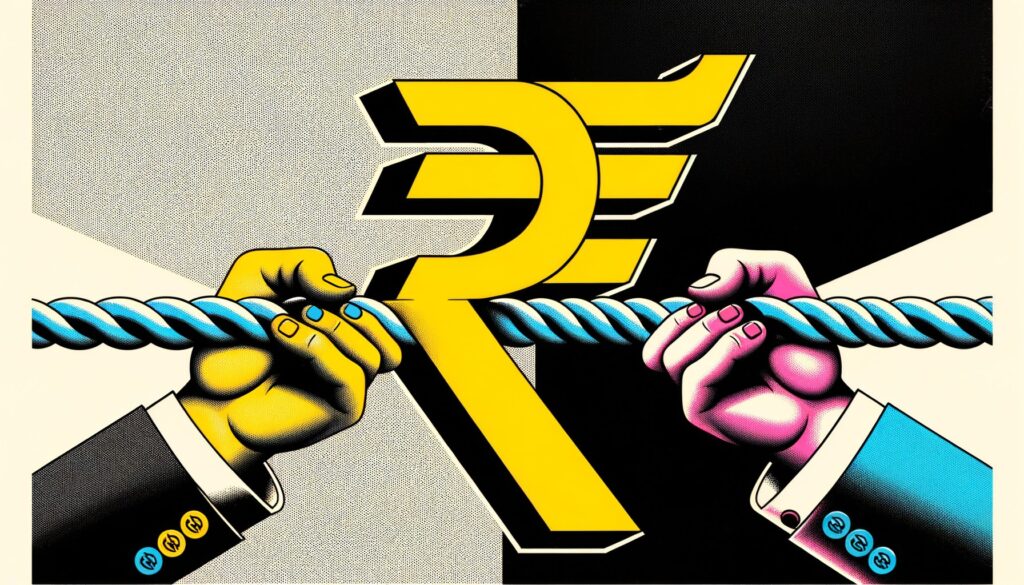What’s going on here?
The Indian rupee ended nearly unchanged at 83.9550 per US dollar on August 9, 2024, but logged its worst weekly performance in over two months.
What does this mean?
Despite a steady close, the rupee’s 0.2% weekly fall marked its sixth consecutive decline. Corporate dollar demand weighed heavily, offsetting benefits from stronger regional currencies and expected central bank interventions. The Reserve Bank of India (RBI) has been intervening in various markets to keep the rupee’s value near 84 and has instructed banks to avoid aggressive short bets. Analysts see a near-term trading range of 83.70-84.10, still trending downwards. Notably, the rupee hit a record low of 83.9725 this week but was propped up by dollar sales from state banks, likely on RBI’s behalf.
Why should I care?
For markets: Rupee’s rollercoaster ride.
Asian shares and currencies saw a boost after lower-than-expected US jobless claims quelled fears of economic slowdown. However, ING notes potential market overreactions, shifting focus to the upcoming US consumer inflation data, crucial for the interest rate outlook. The odds of a 50 basis point Fed rate cut in September have retreated sharply to 53% from 100%, suggesting volatile times ahead for global markets.
The bigger picture: Central bank balancing act.
The RBI held its repo rate steady at 6.50% and maintained its ‘withdrawal of accommodation’ stance for the ninth consecutive time. As central banks worldwide maneuver through inflationary pressures and economic uncertainties, the RBI’s active role in stabilizing the rupee emphasizes the delicate balancing act required to maintain financial stability while supporting economic growth.







